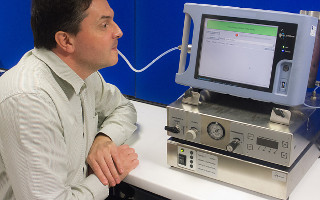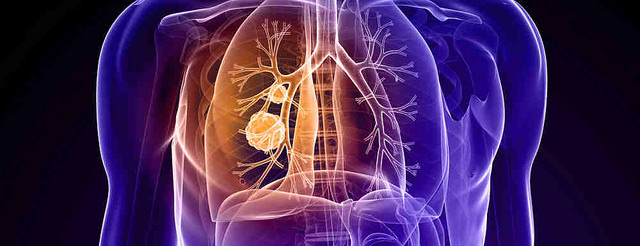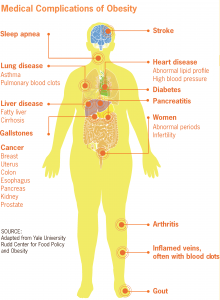According to the World Health Organization (WHO), the leading cause of death worldwide is cancer. More specifically, lung cancer is the most common type of cancer in the world. This terrible disease does not discriminate when it comes to victims. It afflicts both genders, and people of all ages and ethnicities. Luckily, scientists have been working on a new detection device for lung cancer that holds promising benefits for patients. We are literally one breath closer to early detection and treatment of this terrible disease.
The article, Ground-Breaking Lung Cancer Breath Test in Clinical Trial, published on February 14, 2015 states that a breath test shows hopeful advancements in detecting lung cancer. Scientists at the University of Leicester have begun the clinical trials of the Lung Cancer Indicator Detection (LuCID) project. LuCID is a device that detects Volatile Organic Compounds (VOC) at low concentrations in a patient’s breath. The evaluation of VOC’s in a patient’s breath can serve as a biomarker to detect lung cancer.
Dr Siddiqui, the lead researcher in this study, states that lung cancer has one of the lowest survival rates of all cancers. More importantly, he emphasizes the importance of early detection to improve a patient’s prognosis. Basically, the earlier the cancer is discovered, the greater the chance of survival for the patient. For this reason, the LuCID device may just be the missing key to early detection. The device is also cheaper, more efficient, and less invasive compared to other detection methods. For example, performing a CT scan exposes the patient to harmful radiation that could result in further health complications. Another downside to invasive techniques is that they are not suitable for everyone, especially children and pregnant women. Overall, the breath test is a safer alternative to more conventional lung cancer detection methods.
Though the LuCID project is still in clinical trials, it is showing promising results in early detection for lung cancer. Catching lung cancer at an early stage can give patients a much better chance at fighting this disease. Furthermore, this new procedure may potentially lead to more safer and non-invasive detection methods for other diseases as well.
Check out the BBC News coverage on the LuCID device. The video was uploaded by the user KaFaDoKyA NEWS.

– Navjit Moore











